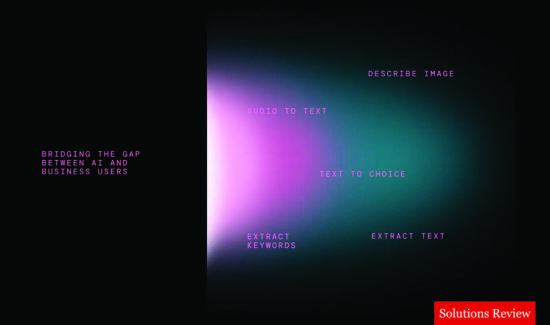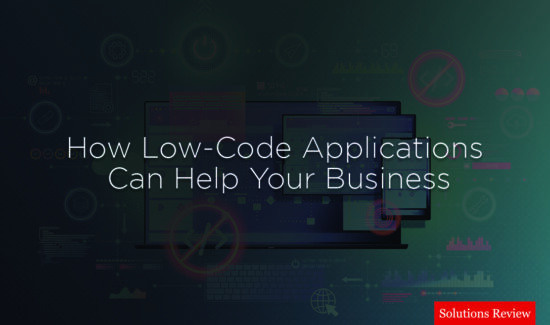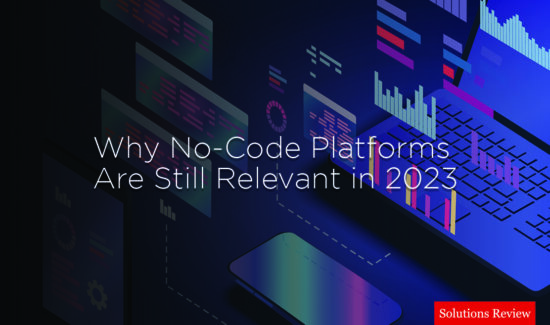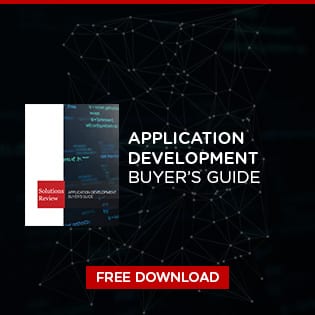What’s Changed: 2019 Gartner Magic Quadrant for Enterprise Low-Code Application Platforms
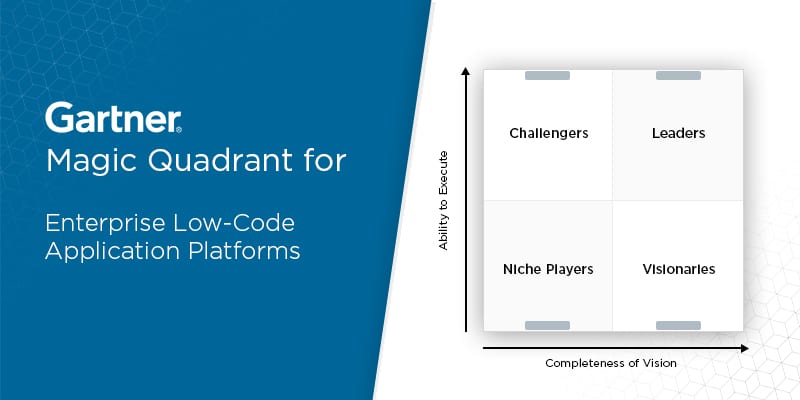

Analyst house Gartner, Inc. recently released the 2019 version of its Magic Quadrant for Enterprise Low-Code Application Platforms. This is replacing 2018’s Magic Quadrant for Enterprise High-Productivity Application Platforms as a Service. Enterprise low-code application platforms offer a variety of productivity gains for professional and citizen development, as well as speed-of-delivery benefits.
The enterprise low-code application platform (LCAP) market is growing strongly in tandem with the demands for applications and talented developers. There is currently a shortage of developers, which naturally leads to the development of these kinds of platforms, empowering employees and business leaders to create applications without dedicated software developers.
LCAPs also represents a movement aiming to democratize application development, providing alternatives to off-the-shelf or SaaS applications. Nevertheless, although many enterprise software vendors recognize the advantages of LCAPs, there are still many who don’t recognize them.
In this Magic Quadrant, Gartner evaluates the strengths and weaknesses of 18 providers that it considers the most significant in the marketplace and provides readers with a graph (the Magic Quadrant) plotting the vendors based on their ability to execute and their completeness of vision. The graph is divided into four quadrants: niche players, challengers, visionaries, and leaders. At Solutions Review, we’ve read the report, available here, and pulled out the key takeaways.
Gartner adjusts its evaluation and inclusion criteria for Magic Quadrants as markets evolve. As a result, K2 and ProntoForms have been added to this year’s report. Caspio, Fujitsu, MatsSoft, and OrangeScape have been removed.
Salesforce tops this year’s Leaders quadrant, claiming persistent LCAP revenue growth, widespread name recognition, aggressive innovation and acquisition activity, and much more. It generates more revenue than any other provider, and continuously invests in deepening its relationships with customers and partners. Microsoft has jumped from the Challengers quadrant to the Leaders quadrant, taking up a position close behind Salesforce. In 2018, this vendor brought its Dynamics 365 platform together with PowerApps, Flow, and the Common Data Service to create a unified LCAP. It has also introduced a low-code AI Builder, and offered deeper integration with Microsoft Azure services.
OutSystems continues to grow by providing an alternative to older 3GL platforms, while simultaneously enabling low-code productivity and access to advanced web and mobile user experience, B2C support, and batch processing. OutSystems also encourages governed and AI-assisted application development with web-based and fat-client integrated development environments. Mendix was acquired by Siemens in 2018, giving it a steady flow of resources, accelerating research and development, and opening new distribution channels. Mendix is also one of the first vendors in the LCAP market to offer a multipersona developer experience within a single integrated platform.
Appian has jumped from the Visionaries quadrant into the Leaders quadrant, its strengths deriving from its model-driven intelligent business process management suite market. In addition to low-code technology, Appian offers support for chatbots and progressive web apps, as well as multiexperience capabilities. Appian continues to demonstrate market maturity through the scale of its deployments and heavy investing in security certifications and audits.
ServiceNow hovers on the border between the Challengers and Leaders quadrants. Largely used for low-code workflow automation relating to ITSM and other domains, this vendor offers support for portal, web, and mobile web user experiences. Oracle has managed to cross from the Visionaries quadrant into this year’s Challengers quadrant. It is the only vendor in this report to offer two distinct LCAP solutions, addressing use cases ranging from simple spreadsheet replacement and form processing to advanced professional developer environments.
Zoho has jumped from the Niche Players quadrant, providing an LCAP for building applications via both citizen and professional development. As a vendor with many existing enterprise technology solutions, such as CRM, this vendor offers a variety of built in integrations and access to a wide array of capabilities. Kony, like Oracle, has crossed from the Visionaries quadrant into the Challengers quadrant. Its Kony Quantum platform is suitable for professional developers who want a low-code approach to web, mobile, and conversational apps. Kony is also one of the few vendors to support both PWAs and chatbots.
Betty Blocks is at the top of this year’s Visionaries quadrant, but is close enough to the border that it wouldn’t be surprising to see them crossing into the Leaders quadrant in next year’s report. Betty Blocks offers a simple drag-and-drop development, and has a record of speedy application delivery; some customers cited their turnover as short as a matter of days. Pega has evolved from a BPM suite into an application platform, adding an LCAP layer to their CRM and other SaaS offerings. It is one of the few vendors in this report to offer a unified multipersona developer experience, and has received above average scores for developer productivity and integration ability.
Kintone is right at the top of the Niche Players quadrant, just on the cusp of being a Challenger. This vendor is growing rapidly as part of Cybozu, a Japanese IT business with annual revenue of over $6 billion. Citizen development is a core capability of this vendor’s LCAP. AgilePoint has a background in BPM technology and offers multitenancy using either on-premises deployment or the cloud. Their product vision extends to low-code edge computing and IoT technology, as well as AI and chatbots. Customers rated AgilePoint’s pricing and value very highly, and the vendor expects to soon release a freemium Community Edition.
Quick Base focuses on ease of use for citizen developers, and has a large customer base that extends across industries, including professional developers that aim for rapid delivery of data-oriented applications. Quick Base offers a wide variety of features, including Kanban project models and multiple data reporting styles. Bpm’online’s LCAP focuses strongly on BPM functionality, which is not surprising considering their existing solutions and technology focus. The platform allows users to create custom ML models without coding or scripting, providing functionality to predict values in different types of fields and calculate predictive scores.
K2, new to this year’s report, provides full application life cycle support for process-driven applications involving multiple developer personas. It has received positive scores from customers for its pricing, costs, functionality, integration features, and developer experience. TrackVia provides a low-cost platform focused on non-IT application developers interested in mobile and web apps. ProntoForms, also new to this year’s report, supports rapid form development with a simple drag-and-drop approach to building mobile apps and web apps.
Read Gartner’s Magic Quadrant for Enterprise Low-Code Application Platforms.
- The 6 Best Application Development Podcasts You Should Be Listening To - February 21, 2020
- The 4 Best Application Development TED Talks for Practitioners - February 19, 2020
- The Best Application Development Events and Conferences to Attend in 2020 - February 13, 2020




